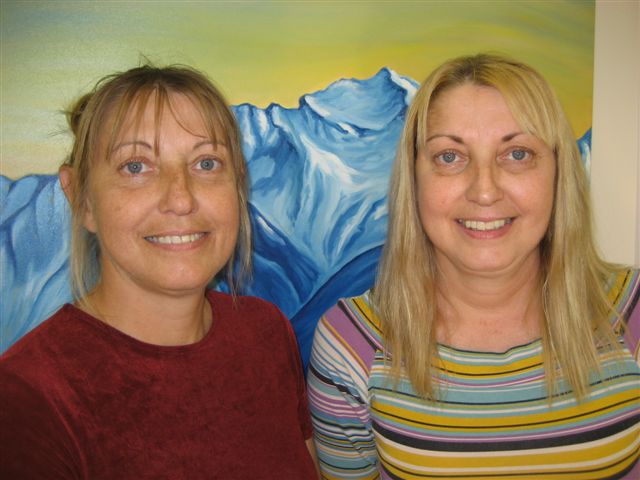
Photo shows on the left Audrey Weimer, 46-year-young patient with renal failure and her twin sister Melinda Fischer who received a kidney transplant in July.
Dear Dr. B: I love reading your column. On August 2, in the Medicine Hat News, there was a front page article on the taking of organs on Falun Gong prisoners in China, and our Canadian $50.00 bill in the photo. Can you please explain to your readers that purchasing organs is illegal in Canada, and what a tremendous gift of life organ donation means to people waiting for an organ. I am a pre-renal patient, and someday will also be on the transplant list. Thank you from the bottom of my heart. Yours sincerely, Audrey Weimer.
Fours years ago Audrey had chronic cough, lethargy and anemia. She was diagnosed to have kidney failure due to Wegner’s disease. The disease is also known as Wegner’s granulomatosis. It is a rare form of inflammation of the blood vessels that affects many organs. The lungs and kidneys are most commonly affected. Audrey new she would need a kidney transplant in the future. Her twin sister Melinda would be the best match as a donor.
Audrey asked Melinda to go get herself checked as a possible donor. But as fate would have it, Melinda was diagnosed to have Wegner’s disease as well. Melinda’s kidneys failed faster than Audrey’s and she went on dialysis. After waiting for three years, she received a kidney transplant in July from a deceased donor.
According to Health Canada website, in 2001, more than 3,700 Canadians were awaiting organ transplants for kidneys, hearts, lungs, or livers, and thousands of others were in need of replacements for tissues such as corneas, heart valves, bone grafts, and skin.
In year 2000 alone, 147 Canadians died while waiting for organs that never came because suitable donors were not found in time. Canada has one of the lowest organ donation rates among industrialized nations.
Organ transplant surgery has made significant progress in the last few years. We know that nearly 98 per cent of all kidney transplants, 90 per cent of liver transplants, and 85 per cent of heart transplants are successful. And the number of patients receiving solid organ transplant has increased by 22 per cent in the last decade.
Is this enough? No. Why should 147 or more Canadians die each year while waiting for a suitable donor? Something needs to be done to improve the situation. We need to raise the public’s awareness.
You can be a donor by signing an organ and tissue donor card (see on the other side of Alberta Personal Health Card) or by registering your consent through the provincial registry. You should also discuss with your loved ones your desire to be a donor. This is very important. Ninety-six percent of relatives agree to organ donation if they already know the wishes of the donor, while only 58 per cent agree when they have not been included in the process in advance, says Health Canada. Do it today. Talk to your family and sign the card. And yes, purchasing organs in Canada is illegal.
Signing an organ donor card does not mean you will not get appropriate care if you are seriously ill. The organ transplant team does not wait outside your hospital room ready to grab your organs as soon as you are pronounced dead. There is a strict protocol to follow before anybody can touch your body. The process is complex and requires a coordinated team approach.
In Alberta, the government has established the HOPE (Human Organ Procurement Exchange) program for the coordination of donation, recovery and distribution of organs for transplantation within Alberta. For southern Albertans the office is in Calgary. For more information phone 403-944-8700 or visit their website: www.calgaryhealthregion.ca/hope.
Start reading the preview of my book A Doctor's Journey for free on Amazon. Available on Kindle for $2.99!